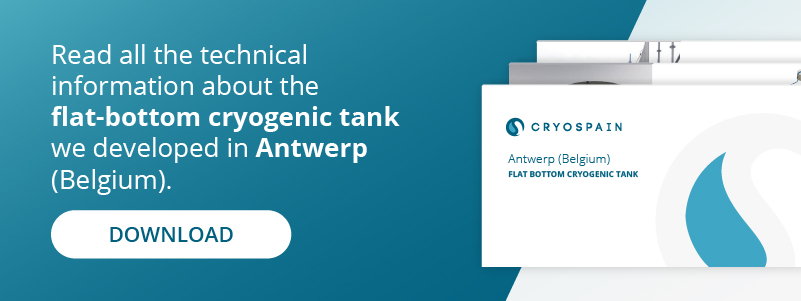Nitrogen is an important asset for many different industries for a long time now. The need to find the right transportation and storage for this element has thus become essential. Therefore, in this article we talk about the importance of nitrogen tanks, their measurements and how to choose the right nitrogen bottle sizes.
Uses and utilities of nitrogen
Nitrogen is used in many industries and sectors, but some of the most common are the following:
- Chemical industries. Nitrogen provides an unreactive atmosphere and helps displacing oxygen. This prevents explosions from happening in chemical plants.
- Food preservation.
- Automotive industry. Nitrogen plays a role in filling ties, improving pressure retention and preventing their oxidation. It also helps with material welding in generating various automobile parts and is included in airbags.
- Electronics industry. Soldering electronics is a common process, as it reduces surface tension. Nitrogen also prevents computers from overheating and is used in fire suppression systems.
- Healthcare applications and pharmaceuticals. Nitrogen helps in freezing and preserving biological specimens, as well as performing cryosurgery. It is also used in medical devices such as X-ray systems.
Regarding pharmaceuticals, most pharmacological drugs contain a certain amount of nitrogen. This element is also used as an anesthetic.
- Stainless steel manufacturing. Nitrogen gas makes stainless steel resistant to corrosion and stronger, while helping remove impurities and eliminating oxidation.
- Manufacturing processes such as shrinking fittings use nitrogen
- Mining uses nitrogen to extinguish fires in a quick manner, as well as preventing explosions from happening.
Why nitrogen tanks are the best storage option?
In order to use nitrogen, it must be correctly stored so that the different users mentioned above can employ it whenever it’s necessary. Nitrogen is commonly stored in its liquid form as it presents many advantages (its volume and weight is reduced). This also means low temperatures (cryogenic) are needed for its preservation.
The most common form for storing liquid nitrogen is using nitrogen tanks or nitrogen dewars. Laboratories, healthcare facilities, manufacturing plants and food processing plants are some potential users for nitrogen tanks, all of which will need to look into the possible nitrogen tanks sizes, depending on the volume of nitrogen that they’ll require.
When it comes to cryogenic or liquid nitrogen, it’s essential to only use suitable vessels for the handling and/or transport of cryogenic liquids.
Some of the most important safety requirements that must be followed include:
- A vacuum stopper which prevents the nitrogen from boiling off
- Pressure release valves to avoid explosions because of pressure build-ups.
- Correct sealing systems. It’s important to not store liquid nitrogen in any container with a tight fitting lid, as a loose fitting lid helps prevent air and moisture from entering the container and at the same time allows pressure to escape.
- Adequate monitors to record potential nitrogen leaks and ventilation systems so that potential nitrogen leaks can be vented away
- Suitable transportation systems to avoid any incidents or damages
- Staff will need robust protective equipment, including cryogenic gloves and eye protection to avoid any burnings.
- Staff will also need to receive appropriate training in order to guarantee a safe storage and management of nitrogen tanks or dewars.
- Appropriate fittings must be installed
- If any transfers are made, it must be done into approved containers, so that no leaks or shatterings take place.
- Regular inspections and maintenance programs must be enacted and equipment replacements will need to take place whenever necessary.
Keep reading: Why are liquid oxygen tanks so important? Uses and other important information
What are the differences between nitrogen tank sizes?
From a large nitrogen tank to a small nitrogen bottle, there are many nitrogen cylinder sizes (which are also known as nitrogen bottle sizes) from which to choose.
This responds to the multiple ways in which companies may need to store nitrogen: while some large companies will need to use bulk nitrogen tanks, others may be interested in acquiring smaller nitrogen tank sizes.
Some common nitrogen tank sizes include:
- 20 cu ft. Height: 14’’ Diameter: 5.25’’
- 40 cu ft. Height: 18.5’’ Diameter: 6.75’’
- 80 cu ft Height: 33.0’’ Diameter: 7.27’’
- 125 cu ft Height: 42.72’’ Diameter: 7.25’’
- 200 cu ft Height: 50.5’’ Diameter: 9.0’’
Nitrogen tanks: Cryospain’s experience
At Cryospain we have extensive experience in the design, manufacturing, assembly, and commissioning of liquid gas pressure storage tanks, including diverse nitrogen tanks sizes that fit our clients’ needs. Our technical office is thus available to design and supply turnkey cryogenic tanks adapted to each project.
Our gas storage tanks present double-wall steel structures, using high tech insulating materials (cellular glass, expanded perlite, rockwool, etc.). Our tanks may be spherical or cylindrical in shape, and are mounted in fixed locations as stationary vessels.
At the same time, all the cryogenic storage equipment we produce complies with the most recognized quality and safety certificates on an international level.











 Contacte-nos
Contacte-nos